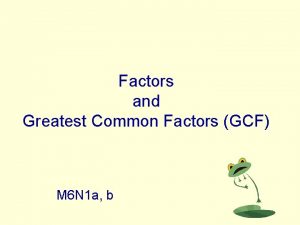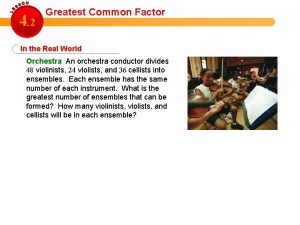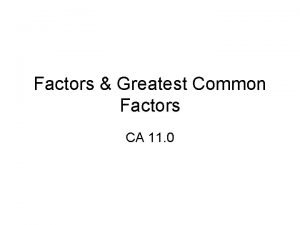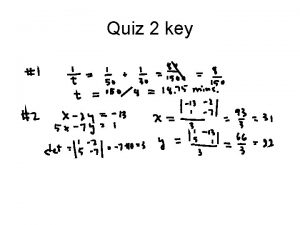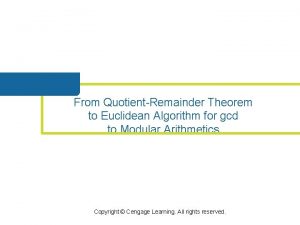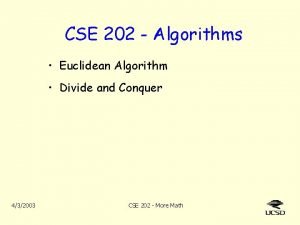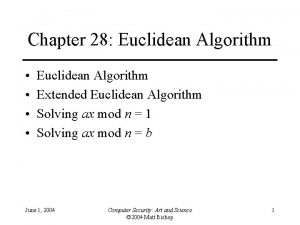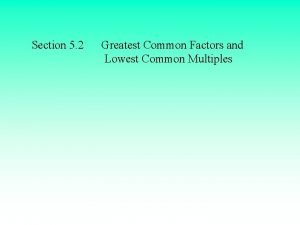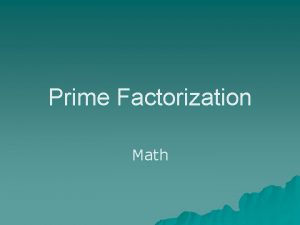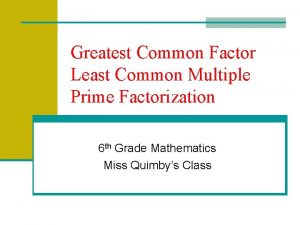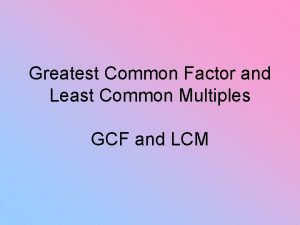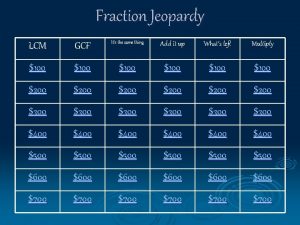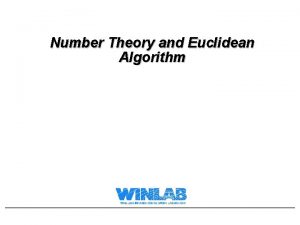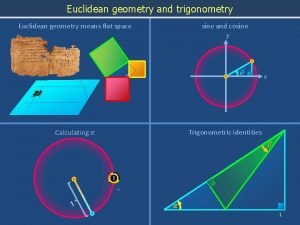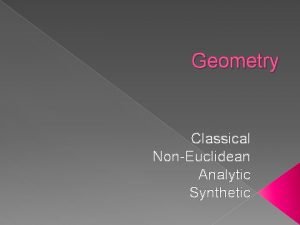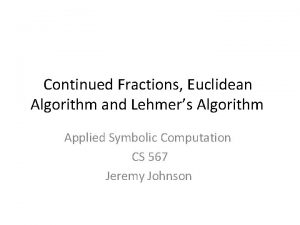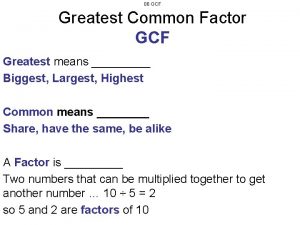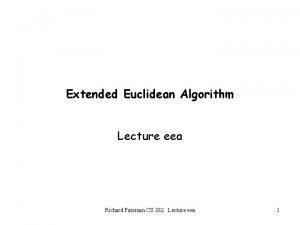Euclidean Algorithm How to find a greatest common




















- Slides: 20

Euclidean Algorithm How to find a greatest common divisor in several easy steps

Euclidean Algorithm The well known Euclidean algorithm finds the greatest common divisor of two numbers using only elementary mathematical operations - division and subtraction

Euclidean Algorithm A divisor of a number a is an integer that divides it without remainder For example the divisors of 12 are 1, 2, 3, 4, 6 and 12 The divisors of 18 are 1, 2, 3, 6, 9 and 18.

Euclidean Algorithm The greatest common divisor, or GCD, of two numbers is the largest divisor that is common to both of them. For example GCD(12, 18) is the largest of the divisors common to both 12 and 18.

Euclidean Algorithm The common divisors of 12 and 18 are 1, 2, 3 and 6. Hence GCD(12, 18)=6.

Euclidean Algorithm The Euclidean Algorithm to find GCD(a, b) relies upon replacing one of a or b with the remainder after division. Thus the numbers we seek the GCD of are steadily becoming smaller and smaller. We stop when one of them becomes 0.

Euclidean Algorithm Specifically, we assume that a is larger than b. If b is larger than a, then we swap them around so that a becomes the old b and b becomes the old a. We then look for numbers q and r so that a=bq+r. They must have the properties that q 0 and 0 r<b. In other words, we seek the largest such q.

Euclidean Algorithm As examples, consider the following. a=12, b=5; 12=5*2+2 so q=2, r=2 a=24, b=18; 24=18*1+6 so q=1, r=6 a=30, b=15; 30=15*2+0 so q=2, r=0 a=27, b=14; 27=14*1+13 so q=1, r=13 Try the ones on the next slide.

Euclidean Algorithm Find q and r for the following sets of a and b. The answers are on the next slide. a=28, b=12 a=50, b=30 a=35, b=14 a=100, b=20

Euclidean Algorithm Answers q=2, r=4 q=1, r=20 q=2, r=7 q=5, r=0

Euclidean Algorithm The algorithm works in the following way. Given a and b, we find numbers q and r so that a=bq+r. We make sure that q is as large as possible (≥ 0), and 0≤r<b. For example, if a=18, b=12, then we write 18=12*1+6.

Euclidean Algorithm Actually the number q isn’t important, it is just easier to find r with it when solving problems by hand. Most software can find the remainder r without finding q. For example the Java statement below will find r. r=a%b;

Euclidean Algorithm Once the remainder r has been found we replace a by b and b by r. This relies on the fact that GCD(a, b)=GCD(b, r). Hence we repeatedly find r, the remainder after a is divided by b. Then replace a by b and b by r, and keep on in this way until r=0.

Euclidean Algorithm Let us look at a graphical interpretation of the Euclidean algorithm. Obviously if p=GCD(a, b) then p|a and p|b, that is to say p divides both a and b evenly with no remainder.

Euclidean Algorithm Suppose a and b are represented by the lengths below.

Euclidean Algorithm Note that b does not go into a evenly, but has some small remainder.

Euclidean Algorithm If p is the GCD of a and b then it divides evenly into both a and b. Hence it divides evenly into b and thus must divide evenly into both of the larger two boxes in the previous diagram.

Euclidean Algorithm Then p divides the length representing b a whole number of times, and hence the boxes in a that represent whole lengths of b.

Euclidean Algorithm Of course if p divides a evenly then it must also divide the remainder evenly. The picture below shows this.

Euclidean Algorithm Hopefully it will be clear that by now any number that divides both a and b must also divide the remainder r. The largest of these will of course be the GCD of a and b. So GCD(a, b)=GCD(b, r).
 Gcf 54 and 27
Gcf 54 and 27 Gcf of 72 and 90
Gcf of 72 and 90 Prime factor of 56
Prime factor of 56 Greatest common factor of 19
Greatest common factor of 19 Gcf of 28 and 42
Gcf of 28 and 42 Find the greatest common factor of 24 and 36
Find the greatest common factor of 24 and 36 Faktor sepunya
Faktor sepunya Facots of 18
Facots of 18 Euclidean algorithm for polynomials calculator
Euclidean algorithm for polynomials calculator Euclidean algorithm
Euclidean algorithm Cse 202
Cse 202 The euclidean algorithm
The euclidean algorithm Greatest common factor of 15 and 21
Greatest common factor of 15 and 21 Greatest common factor of 15 and 35
Greatest common factor of 15 and 35 Common factors definition
Common factors definition Prime of 72
Prime of 72 Lesson 1 factoring using the greatest common factor
Lesson 1 factoring using the greatest common factor What is the greatest common factor of 42 and 84
What is the greatest common factor of 42 and 84 What is the gcf of 32 and 48
What is the gcf of 32 and 48 Gcf of 72 and 90
Gcf of 72 and 90 Greatest common factor of 7 and 9
Greatest common factor of 7 and 9




